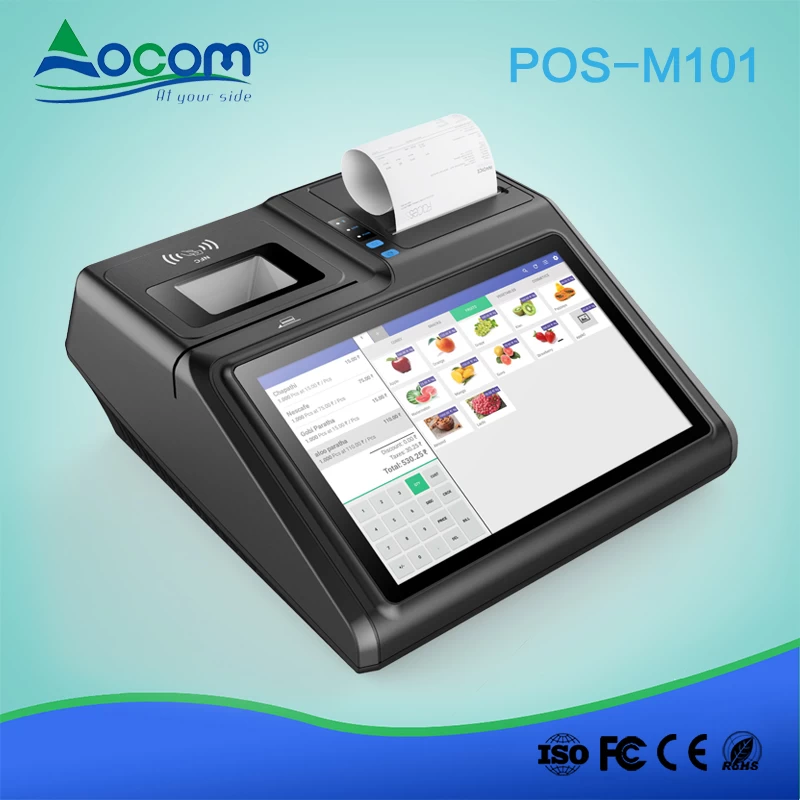Exactly How POS System Functions: A Comprehensive Guide for Service Owners

Understanding the Elements of a POS System

How Sales Transactions Are Processed
When a customer chooses to make a purchase, the sales deal launches a series of systematic steps within the POS system. The cashier inputs the items being bought, which are checked through a barcode reader or manually gone into. This activity recovers product details, consisting of prices and suitable taxes, from the system's database.Next, the consumer is presented with the complete quantity due. The POS system then refines the payment, whether through cash, credit score card, or mobile payment techniques (Restaurant POS Software). For electronic payments, the POS safely communicates with settlement processors to license and verify the transaction.Once the settlement is confirmed, the system generates an invoice, which can be published or sent digitally. This invoice serves as receipt for the customer. The transaction information is taped in the system, ensuring accurate sales documents and monetary tracking for the company.
Inventory Monitoring and Tracking

Effective stock management and tracking are necessary parts of a POS system, as they guarantee that organizations preserve excellent supply levels and decrease inconsistencies. A durable POS system enables for real-time inventory updates, mirroring returns and sales instantly. This makes it possible for organization owners to keep an eye on supply levels precisely, making certain that popular things are conveniently offered while preventing overstocking of much less preferred products.Additionally, advanced POS systems provide attributes such as automatic supply informs and reorder ideas, streamlining the procurement procedure. Barcoding and RFID modern technology enhance accuracy in tracking supply movement, lowering human error. Comprehensive coverage tools give understandings into stock turn over rates, helping services make informed decisions concerning purchasing and product offerings. Eventually, effective stock monitoring via a POS system not just enhances functional performance yet additionally improves customer fulfillment by making sure item accessibility.
Evaluating Client Data and Insights
Client data analysis acts as a powerful tool for organizations utilizing a POS system (Restaurant POS Software). By checking out and collecting transaction data, businesses can discover valuable insights concerning customer behavior and choices. This analysis allows them to determine acquiring patterns, peak buying times, and prominent products, thereby educating inventory choices and advertising and marketing strategies.Additionally, companies can sector their customer base, allowing for personalized marketing efforts that satisfy certain demographics or buying practices. Understanding consumer commitment patterns also helps in creating targeted promotions and incentives programs.The information obtained from a POS system can likewise expose insights right into client responses, allowing companies to make informed choices concerning item offerings and service enhancements. Inevitably, leveraging consumer information effectively can boost the overall purchasing experience, foster customer complete satisfaction, and drive earnings growth
Advantages of Carrying Out a POS System

Regularly Asked Questions
What Sorts Of Businesses Can Benefit From a POS System?
Different services take advantage of a POS system, including stores, restaurants, beauty salons, and e-commerce platforms. These systems improve purchases, supply administration, and customer information, improving operational performance and boosting customer experience throughout varied markets.
Exactly how Much Does a POS System Normally Cost?
The cost of a POS system typically varies from a few hundred to several thousand bucks, relying read here on functions, equipment, and software application. Services must take into consideration ongoing costs for deal, maintenance, and assistance processing when budgeting.
Can I Integrate a POS System With Existing Software?
Integrating a POS system with existing software is commonly viable. Many systems offer APIs or built-in compatibility functions, enabling services to enhance procedures and enhance functionality by connecting various software application applications effectively.
What Training Is Required for Staff to Use a POS System?
Training for staff to make use of a POS system commonly consists of understanding software program functionalities, processing purchases, taking care of inventory, and handling consumer communications. Practical presentations and hands-on session enhance proficiency and self-confidence being used the system effectively.
What Happens if the Net Decreases While Using a POS System?
Deals may be disrupted if the net goes down during POS system usage. Several systems supply offline abilities, allowing standard operations to proceed, but full performance, consisting of real-time supply updates, will certainly be limited. A Factor of Sale (POS) system is composed of numerous key parts that work with each other to help with purchases and take care of business procedures. Effective stock monitoring and monitoring are essential elements of a POS system, as they assure that companies preserve suitable stock degrees and reduce discrepancies. Customer information evaluation serves as a powerful tool for organizations making use of a POS system. visit homepage Understanding customer commitment patterns additionally helps in establishing targeted promos and benefits programs.The data obtained from a POS system can additionally reveal insights into customer feedback, allowing services to make enlightened choices relating to item offerings and solution improvements. Implementing a POS system provides countless benefits that can greatly enhance company procedures.